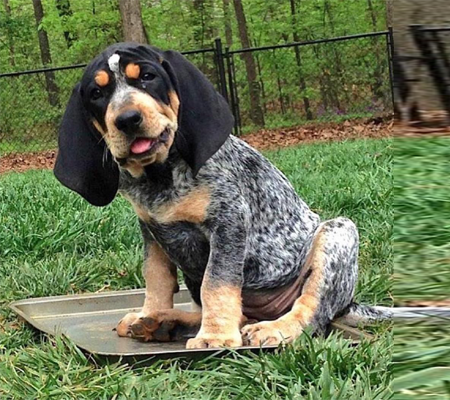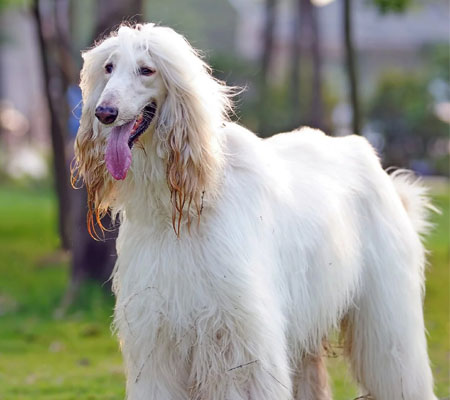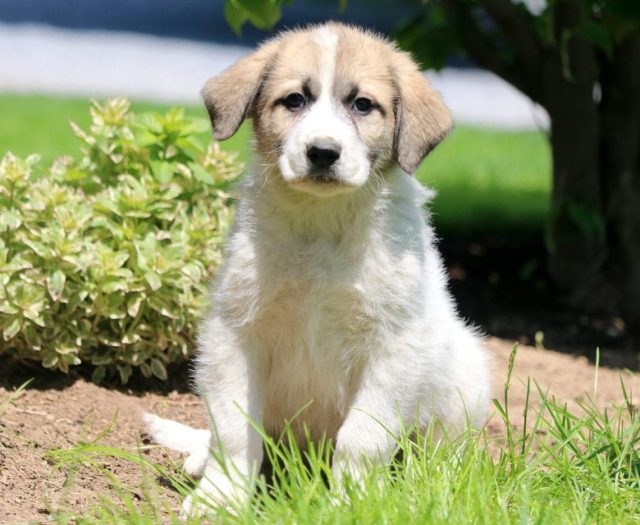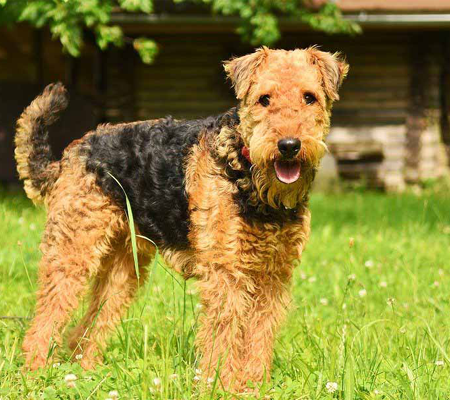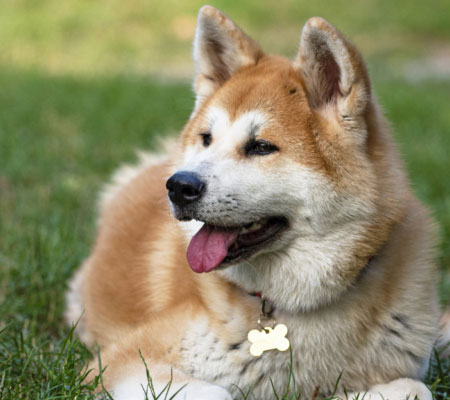The American English Coonhoound, a descendant of
the English Foxhound, is a hunting dog breed notable for its speed, endurance,
and booming voice in the field. They'll also bark and bay at home, making them
a terrible choice if you have neighbours nearby. They require a lot of physical
activity.Even though they are purebred canines, they may end up in shelters or
rescue organisations. Keep in mind to adopt! If you want to bring a dog home,
don't go shopping.
These dogs are affectionate, clever, and easy to train and maintain. However, first-time pet owners should be cautious. They also require rigorous, continuous training as well as a high level of mental and physical exertion. If you can't keep up with the seemingly endless walks and play sessions, a less active breed could be a better fit. You'll have an affectionate furry family member if you can offer them with the exercise they require, a highly safe yard to roam, and careful training.
American English Coonhound Highlights
Breed Size
Medium
Nature
Gentle, Friendly, Playful, Outgoing, Willful
Energy Level
Hyper
Intelligence
High
Barking Level
When Necessary
Coat Length
Long, Medium
Breed Group
Hound
Droll Amount
Low
Good with
Familes, Children, Dog
Feed Level
Medium, High
Colour Type
Red tick, Tri-color, Lemon & White, Red & White, Tri-color Ticked, Blue tick
Other Facts
The American English Coonhound, formerly known as the Virginia Hound and developed to hunt the rugged terrain and wily raccoons of the American colonies, is famed for his speed and endurance.
Dog History
It is descended from settlers' hunting dogs,
particularly foxhounds, who brought them to America in the 17th and 18th
centuries. The United Kennel Club initially recognised the breed as the English
Fox and Coonhound in 1905.
The English Coonhound, also known as the American English Coonhound or the Redtick Coonhound (by the American Kennel Club alone), is a coonhound breed that originated in and is typically bred in the Southern United States. It is descended from settlers' hunting dogs, particularly foxhounds, who brought them to America in the 17th and 18th centuries. The United Kennel Club initially recognised the breed as the English Fox and Coonhound in 1905. The American Kennel Club has given it further recognition in recent years, first in the Foundation Stock Service and then as a fully recognised member of the hound group in 2011.
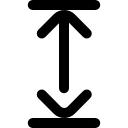
Height
22-27 inch
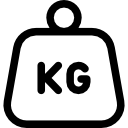
Weight
18-25 kg

Life Span
10-13 year
Health and Care
A weekly brushing with a hound mitt or a rubber
brush can keep the American English Coonhound's coat clean and lustrous.
Although the American English Coonhound is a generally healthy breed, keep an
eye out for any of the following problems: Overheating. Lysosomal storage
disease (LSD) is a kind of lysosomal storage
Dog Breed Care Tips and
Important Instructions
Owners who study everything there is to know
about an American Coonhound's nutrition, grooming, and activity needs will have
everything they need to provide exceptional care for their pet. Considering the
frequent health difficulties that this breed faces, whether it's a puppy or an
older dog, will help you choose how to care for it on a regular basis.
The amount of hair lost by these dogs is ordinary.
A weekly grooming procedure can help maintain the dog's coat looking lustrous
and reduce the quantity of hair on the furnishings. A grooming glove can assist
remove dead hair and stir up natural oils that shine a dog's coat. Another
useful grooming product for this dog's coat is a brush with soft boar's hair
bristles.
The best approach to groom an American Coonhound
is to start at the top and work your way down the hairline.
Grooming a dog on a weekly basis helps an owner
to discover skin irritations and bald areas that might indicate allergies.
Furthermore, a grooming practise might help to strengthen the bond between you
and your partner.
These dogs are clever, determined, and very
simple to teach in obedience. Smells of animals and other items in the neighbourhood,
on the other hand, might distract them. This hound dog learns all of its
lessons in one training session thanks to a lot of patience, words of praise,
and favourite goodies.
American Coonhounds are high-energy dogs. They
require 30 to 60 minutes of daily activity. Exercise benefits both their
physical and emotional well-being. If this dog does not receive enough
exercise, it may begin to gnaw on household goods and become generally
destructive.
Feeding
Setting up a healthy diet for your American
Coonhound might help you avoid common health problems. To keep healthy, pups
and adult dogs require various types and quantities of nutrients. Take a look
at the following crucial considerations:
Puppy food for American Coonhounds: A
high-quality puppy food with protein from meats and vegetables helps create
expanding muscles and strong bones. Protein is an important component in the
treatment of hip and elbow dysplasia. Vitamin C helps to maintain healthy eyes
and eyesight, which can help to avoid cataracts. Omega 3 fatty acids are good
for your heart. A small quantity of fat provides energy to a puppy while also
assisting it in maintaining a healthy weight. 1 to 2 cups of food should be
given to a puppy twice a day.
Adult American English Coonhound food: A
high-quality meal containing protein in the form of meat, such as chicken, is
required for an adult American English Coonhound. Protein continues to fight
diseases like hip and elbow dysplasia in mature dogs' diets. Healthy coats are
aided by omega 3 and 6 fatty acids. Antioxidant-rich foods aid in the
prevention and treatment of sickness. An mature dog's diet with a small
quantity of fat provides energy without adding weight to its athletic physique.
In this breed, vitamins A and C help to maintain eye health. Two to three cups
of food should be given to adult dogs three times a day. Of course, if a dog
isn't as active, this may be adjusted.
Making water available to
your adult dog or puppy at all times aids in their digestion.
Fun Facts
·
They
Were Bred to Hunt Raccoons
·
George
Washington May Have Helped Develop the Breed
·
They
Can Climb Trees
·
They're
Very Talkative
·
They
Are Also Called Redtick Coonhounds
·
An
American English Coonhound Won the First Major Coon Dog Trial
Home Training Tips and General
Information
·
When
teaching your American English Coonhound puppy, praise and positive
reinforcement are quite beneficial.
·
You
should never scream at your puppy or penalise them for not listening – positive
reinforcement is the most effective way to teach your American English
Coonhound.
·
Instead
of stroking your American English Coonhound on the top of their head or back,
give them a pat beneath their chin or chest, which is more loving for them.
·
Long
sessions of training are not recommended for your American English Coonhound.
Training them in short but frequent sessions throughout the day is more
dependable. An American English Coonhound should be trained 3-5 times a day for
5-minute sessions. This ensures your safety.
·
Reward
your dog with a pet dog reward after they have successfully completed what you
have requested of them.
·
Many
American English Coonhound owners make the mistake of allowing their young
puppy to perform things that they would not want them to do later in life (e.g.
laying on furniture). Allowing them to develop this habit will make it
exceedingly difficult to modify your dog's behaviour afterwards.
·
Puppy
training for an American English Coonhound should begin at the age of eight
weeks, and they usually reach full learning ability between the ages of eight
and twelve weeks.
·
When
clapping, use a joyful tone, and when saying "No," use a forceful
tone (but make sure you don't say it loudly).
·
Take
your American English Coonhound young puppy out frequently
·
Learn
the signs your American English Coonhound needs to go
·
Take
your American English Coonhound to the exact same area each time
·
Mingle
your American English Coonhound at a young age
·
Sterilize
your American English Coonhound
·
Participate
in obedience training
·
Do
not shout back
·
Teach
your American English Coonhound to comprehend the word “Quiet”
·
A
tired American English Coonhound is a quiet American English Coonhound
FAQS
|
Is it possible to keep an American English Coonhound as a pet? |
|
American English Coonhounds are lively dogs who make fantastic
companions. They were originally developed for hunting. They respond well to
reward-based training, and their friendly, outgoing demeanour makes them an
ideal breed for households with children or other pets. |
|
Do English coonhounds make a lot of noise? |
|
It's no wonder that these hunting dogs like tracking and exploring. Every
fascinating scent and sound will pique your American English Coonhound's
curiosity. When not in an enclosed location, this breed should be kept on a
leash since they like to roam. This breed is fairly noisy because it is a
Coonhound. |
|
Do English Coonhounds in the United States bark a lot? |
|
Because this breed has a keen sense of smell and a strong desire to hunt,
they are prone to following a scent before you realise it. They're also noted
for their loud howling and barking, but they're usually calmer indoors. |
|
What are the most important requirements for coonhounds? |
|
These huge hounds demand a lot of workout when it comes to running.
Coonhounds are pleased to sprawl and snooze if they get enough activity. They
will grow boisterous and bored if they do not get enough activity, which they
normally express by baying and destructive chewing. |
|
Is a coonhound a large or medium breed? |
|
Long, drooping ears and a robust, tapering tail characterise this
enormous, muscular working dog. The eyes are either hazel or dark brown in
colour. |
American English Coonhound Unique Name
| Male Name | Female Name |
|---|---|
| Butch | Bella |
| Chico | Bianca |
| Dane | Brownie |
| Flash | Delilah |
| Goose | Emmy |
| Harvey | Inez |
| Kane | Khloe |
| King | Lola |
| Leo | Mackenzie |
| Peanut | Mia |
| Reggie | Nina |
| Sawyer | Nori |
| Scooby | Sadie |
| Smoky | Sissy |
| Tank | Brook |
| Wrigley | Chelsea |
| Wyatt | Chessie |
| Ace | Claire |
| Tipper | Keesha |
| Tommy-boy | Charlie |

